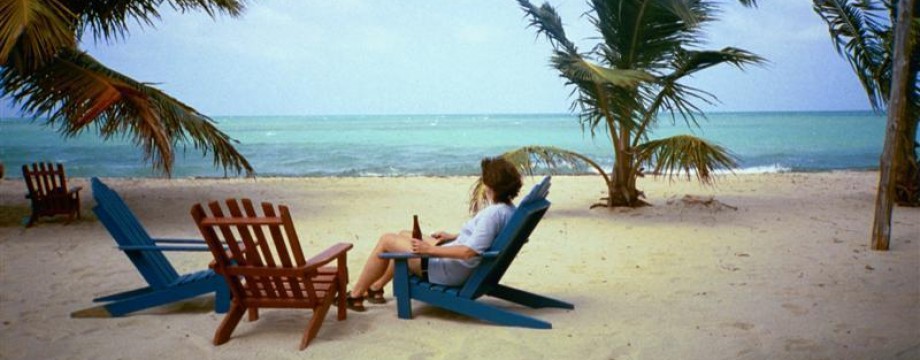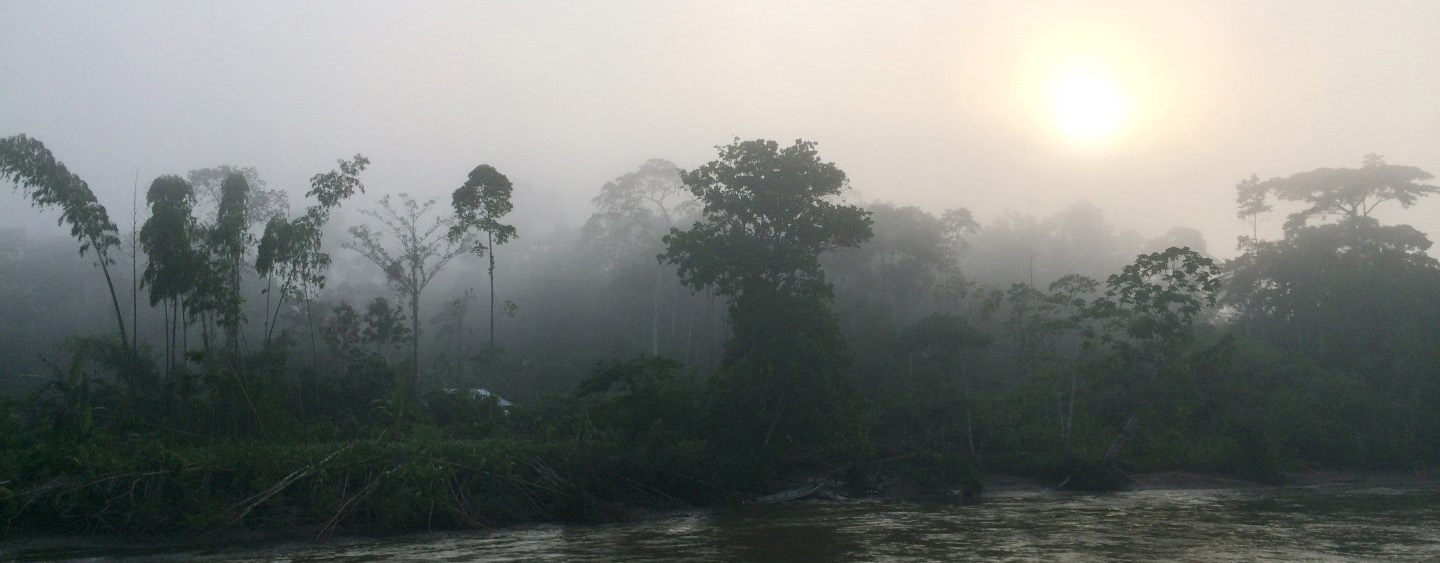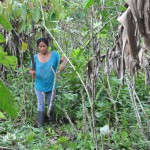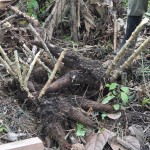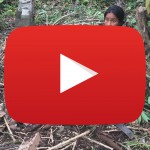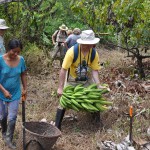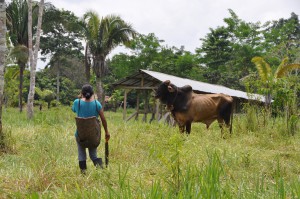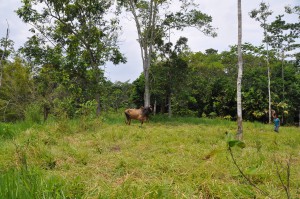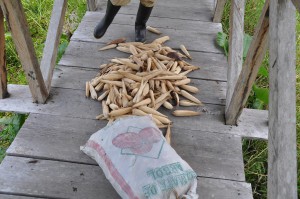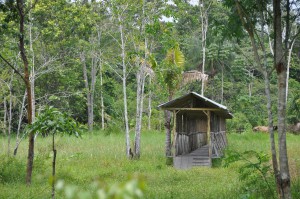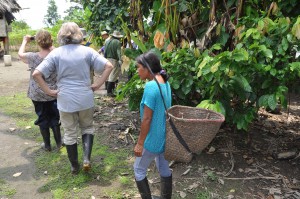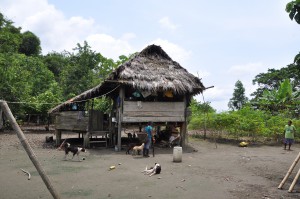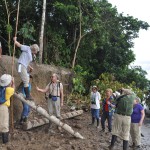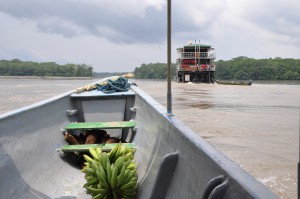This is a three part series on the Kichwa people living near the Yasuni National Park in the eastern Ecuadorian Amazon Basin along the Napo River. In Part 1 of the series, we discuss the village, schools, and infrastructure. In Part 2 of the series, we visit a Kichwa farm. In Part 3 of the series, we visit a cultural center and see how the Kichwa women are working to preserve their culture.
Part 2 – The Farm
During our recent trip to the Amazon, we have several opportunities to visit with the local indigenous population. We were able to visit a Kichwa community, a Kichwa farm, and a Kichwa cultural area.
The Kichwa (or Quechua) are an indigenous people in South America. They speak the Kichwa language, which is also the same language the Inca’s spoke. They are found primarily in Ecuador, Peru, Bolivia, Chile, Colombia, and Argentina. Total population of Kichwa people is between 10 and 11 million people, with about 2.5 million of them in Ecuador.
In Part 1 of the series, we looked at a village commune and visited a school.
Our second visit was to a Kichwa farm. Situated along the Napo River, the farm we visited encompassed several hundred acres of land. Most of the land was jungle, with some areas cleared out for the house, a few crops and some cattle.
Two families lived on this farm. The primary resident was an elderly woman; her husband was deceased. The second family was her son and his wife, Precila, and their teenage kids. Precila was the one who took us on the tour of the farm and showed us their way of life.
Upon arrival to the farm in our canoe, we climbed up the riverbank, and it opened to a small clearing about an acre in size. In the center of this clearing was a farm house, with a small crops planted to one side. This was Precila’s mother-in-law’s house. The entire family lived in this house currently, as Precila’s family house had burned down a couple of months previously. There were stacks of timber and other building supplies stored nearby. The family was gradually accumulating materials to construct a new house. They hoped to have enough to begin rebuilding within the year.
We followed Precila and her husband down a trail, away from the river. The path led along the edge of where the pasture and jungle met. About 100 yards down the path, we came to a small gravesite belonging to Precila’s father-in-law. I gave my condolences and did not inquire further as to what had happened to him.
We kept hiking along the trail further and further past the pasture and into the jungle. We came upon a small clearing with bushes growing all about. These were the manioc or yuca plants. Manioc is a staple food in this part of the world. It is eaten daily by the locals. The tubers are similar in flavor and texture to potatoes, and are used in the same way we use potatoes; fried, boiled, mashed, etc. They are also used for making an alcoholic drink called “chicha”.
Precila started hacking away at the top of the plants with her machete, leaving about 18” sticking up out of the ground. Then she would grab the remaining trunk and pull. Out of the rich soil the tubers would come. It was surprising to see how large and how many tubers came out of the ground on one plant! Several of the ladies, including Kathy, all had a try at it and pulled some manioc out of the ground. Only the women were allowed to harvest the manioc. Men are not allowed by tradition.
After harvesting a lot of manioc, Precila used her machete to clean and separate the individual tubers. She then lined a large basket with a banana leaf, and placed the tubers in the basket for transport back to the farm house.
We then went over to an area where the soil was exposed and been recently burned to clear the brush. Using the machete, Precila dug some small trenches in the soil. She then placed the 18” long piece of trunk from the manioc bush in the ground and covered it with one end sticking out slightly. In 6-12 months a new manioc bush will grow here and be ready for harvesting. So by harvesting the tubers, and replanting the trunk, a steady supply is ensured.
Next up on the farm was the harvest of some sugar cane. Precila used her machete to hack off a couple of sugar cane stalks and then trimmed them of their leaves. They were about 5 feet long and 3 inches in diameter. A small sampling was cut off for us to chew on raw. Although it was sweet, I can’t say I was impressed.
While we were cutting the sugar cane, Precila’s husband relieved a banana tree of its large cluster of plantains. I picked up the cluster of bananas to see how heavy it was. It was surprisingly heavy, about 35 pounds. It also left a very sticky residue on my hands from where the stalk was severed.
With our manioc, sugar cane and plantains in hand, we started back towards the farm house. As we left the jungle and approached the pasture, we saw a very large bull tethered there. We had to work our way around the bull, as to not get too close to him. Precila stood by waving her machete at the bull to keep him distracted while we all worked our way around him. Suddenly the bull let out a big snort and charged Precila! She screamed and ran! It was actually kind of funny. Precila regained her composure and went back to threatening the bull. I started filming video at this point, just in case things got interesting again. They didn’t.
After the incident with the bull, we came to the cute little wooden bridge in the middle of the pasture. Some corn was laying on the bridge to dry. We all crossed over and made it back to the farm house without further delay.
Precila’s husband carried the plantains and our guide Raul carried the sugar cane. Manioc, being women’s work, was carried by Precila. The basket she had placed the tubers in was on her back, with the strap around her head. It’s an interesting way to carry the load, but upon careful inspection you can see the strap evenly distributes the weight of the basket down the spine.
The farm house itself wasn’t much to speak of. It’s very typical for this area. The house is on stilts to keep it above the annual floods. The roof is thatched, the partial walls wooden, and no door. Laundry can be hung to dry above the partial wall to catch the cross breeze, and yet still allow it to be under the roof to stay out of the rain.
We thanked our hosts for the tour and visit to their farm. Our guide paid them generously for their time, the manioc, the plantains and the sugar cane. What each family grows on their farm is mainly for their use only. They raise their own chickens, eggs, beef, fish, manioc, plantains, sugar, coffee, vegetables, fruits, etc. There is very little extra produced to send to market, and very little trade going on among them. There is some trade, but it is not an important part of their economy here. Each family tries to be self-sufficient as much as possible. In this instance, true eco-tourism benefits the locals as well as us.
We made our way back to the river bank where the last challenge of this tour remained. We had to successfully navigate down a traditional stairway. A balsa tree is cut down and trimmed into a log. Notches are then cut unto the log to create steps. This log has been used as a traditional stairway for centuries. They use this type stairs to enter their homes, and also use them along the river banks during the dry season, as we did. When you are not home, you are supposed to turn the log over so the steps face down. If somebody comes by in their canoe and they see the log upside down, they know you are not home and can keep paddling on by. If your steps are facing up, they can stop for a visit.
Kathy and I successfully climbed down the log and did not fall into the mud. I will brag a little on myself and note that I was the first to do so. The three guys who went before me had a lot of trouble keeping their balance and making it down. I made it look easy in comparison. Kathy did too. High five to us!
We loaded our bounty into the boat and were on our way back to the Manatee in no time. And yes, we had fresh cooked plantains and manioc in our dinner that night. It was delicious!
Part 1 – The Village Commune
Part 2 – The Farm
Part 3 – Cultural Center
